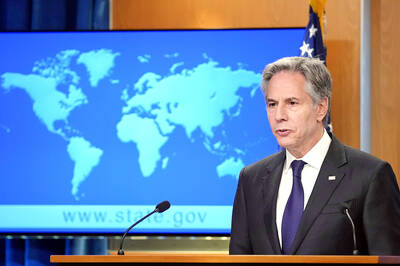The number of Costa Rican institutions hit in a wave of cyberattacks in the past month has grown to 27, Costa Rican President Rodrigo Chaves said on Monday, in one of the earliest challenges to face the new leader during his first month in office.
Nine of the institutions struck, mostly government agencies, are considered “very affected,” Chaves said.
The attacks have had an “enormous” impact on foreign trade and tax collections in the Central American country, he said in comments to reporters barely a week after he was sworn in as president.
In the middle of last month, then-Costa Rican president Carlos Alvarado’s government reported hacker attacks on the Costa Rican Ministry of Finance, which spread to other state institutions after authorities refused to pay a US$10 million ransom demanded by the Russian hacker group Conti.
“We are at war and that is not an exaggeration,” Chaves said at his inauguration on May 8, as he announced a national state of emergency.
Chaves did not provide an updated list of institutions targeted by the hackers.
Speaking at the same news conference, Costa Rican Minister of Science and Technology Carlos Henry Alvarado said that the governments of Israel, the US and Spain have provided assistance to help protect computer systems and repair the damage.
The full extent of the damage is not yet known, Alvarado said.
The attacks have forced the finance ministry to deactivate Costa Rica’s tax collection systems, although a substitute platform has allowed some customs transactions to go forward, Chaves said.
The president also accused fellow Costa Ricans of “betraying the country” and the previous administration of concealing information about the attacks, saying there were signs that some locals were collaborating with hackers.

‘IN A DIFFERENT PLACE’: The envoy first visited Shanghai, where he attended a Chinese basketball playoff match, and is to meet top officials in Beijing tomorrow US Secretary of State Antony Blinken yesterday arrived in China on his second visit in a year as the US ramps up pressure on its rival over its support for Russia while also seeking to manage tensions with Beijing. The US diplomat tomorrow is to meet China’s top brass in Beijing, where he is also expected to plead for restraint as Taiwan inaugurates president-elect William Lai (賴清德), and to raise US concerns on Chinese trade practices. However, Blinken is also seeking to stabilize ties, with tensions between the world’s two largest economies easing since his previous visit in June last year. At the
Nearly half of China’s major cities are suffering “moderate to severe” levels of subsidence, putting millions of people at risk of flooding, especially as sea levels rise, according to a study of nationwide satellite data released yesterday. The authors of the paper, published by the journal Science, found that 45 percent of China’s urban land was sinking faster than 3mm per year, with 16 percent at more than 10mm per year, driven not only by declining water tables, but also the sheer weight of the built environment. With China’s urban population already in excess of 900 million people, “even a small portion

UNSETTLING IMAGES: The scene took place in front of TV crews covering the Trump trial, with a CNN anchor calling it an ‘emotional and unbelievably disturbing moment’ A man who doused himself in an accelerant and set himself on fire outside the courthouse where former US president Donald Trump is on trial has died, police said yesterday. The New York City Police Department (NYPD) said the man was declared dead by staff at an area hospital. The man was in Collect Pond Park at about 1:30pm on Friday when he took out pamphlets espousing conspiracy theories, tossed them around, then doused himself in an accelerant and set himself on fire, officials and witnesses said. A large number of police officers were nearby when it happened. Some officers and bystanders rushed

Beijing is continuing to commit genocide and crimes against humanity against Uyghurs and other Muslim minorities in its western Xinjiang province, U.S. Secretary of State Antony Blinken said in a report published on Monday, ahead of his planned visit to China this week. The State Department’s annual human rights report, which documents abuses recorded all over the world during the previous calendar year, repeated language from previous years on the treatment of Muslims in Xinjiang, but the publication raises the issue ahead of delicate talks, including on the war in Ukraine and global trade, between the top U.S. diplomat and Chinese